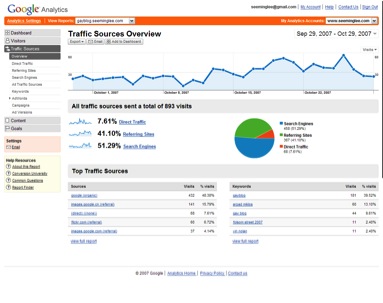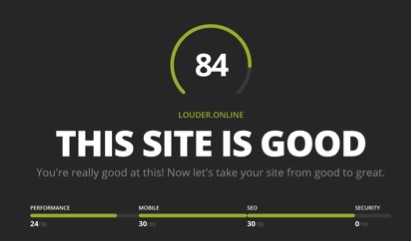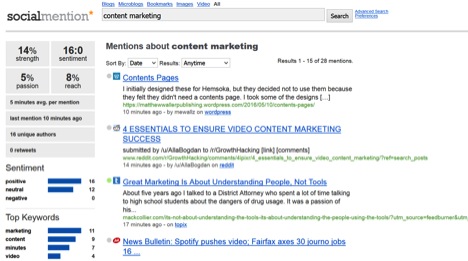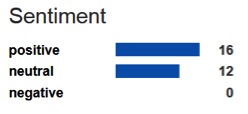The world of content marketing moves fast.
- There’s a lot to do to keep a campaign running smoothly, including creating content, researching audiences, and engaging with audiences on social media.
With a lot of pressure to perform a wide variety of different jobs every day, it can be easy to overlook changes that can be made to your campaign to make it more effective.
- The smartest content marketers will schedule time to analyze their efforts and rework their content campaign for maximum efficiency and effectiveness.
- Where this isn’t possible, though, it’s important to find the time to quickly check over your campaign to spot any glaring problems or opportunities that you might be missing between more detailed reviews.
I’ve come up with a schedule for a quick campaign check that you can put into action in just fifteen minutes.
- Fifteen minutes isn’t going to distract too hugely from your other responsibilities, but it should help you to keep your campaign constantly focused is you use it regularly.
To do this as quickly as possible, I recommend using a variety of automated scanning tools which can quickly and clearly give you a breakdown of the success of your content, website, and social media performance in just a few seconds each.
- It’s not necessary to check all of these tools each time you perform a fifteen minute campaign check – pick a different one to look over each day so that you’re not slowed down too much.
Take the time to look through your content campaign every day, focusing on the following steps:
Step One: Review Goals
It’s vitally important to keep your goals at the center of everything you do with content marketing.
- Goals help to focus your work on the right areas of development.
- Straying away from your targets can mean wasted efforts as you lose direction for your campaign.
As the first part of your content marketing strategy, you should have set concrete marketing goals.
- As you evaluate your strategy, look over these goals to see how well they apply to what you’re doing with your content.
As part of this step, I’d recommend looking over the numerical targets that you’re working towards (web traffic, lead generation and sales among other goals), and glancing over your editorial calendar to see what’s coming up in the near future.
Check Your Editorial Calendar
Beyond these numerical targets, it’s worth taking a few seconds to look over what content is going to be released in the near future, and what events are appearing on your editorial calendar.
This will include:
- Checking for any major dates, such as holidays or anniversaries, which you can use as opportunities to help your content travel further.
- For example, if you know your audience is going to be talking about a particular trade show, make plans to create content that will form part of the discussion.
Having these plans in advance in the weeks before subjects become relevant can mean having excellent content ready to grab audiences once they start discussing the events that matter to your industry.
It’s also worth briefly looking over the last piece of content you’ve published to see how well it fits with your goals.
- Take an opportunity to quickly look through a piece of work, spotting what works well and what might not flow as well as it could do.
- You’re not looking at the way visitors or followers are engaging with your content – we’ll look at that a little later.
- Instead, we’re looking to see what an immediate, initial glance at your content will reveal to you.
It’s useful to do this for two reasons:
- You get a good idea of what stands out to your customers when they first see your content.
- When looking at content that has been recently completed, it’s harder to see things from an objective view.
Looking at something as part of a quick evaluation will reveal things to you that you might not otherwise have noticed.
Make a few notes on the piece of content that you’ve looked at, regarding what you think you can do better and what you think you should incorporate into future content.
Step Two: Check Your Content Stats
Take some time regularly to look over the numbers for each piece of content you’re producing, to see what’s doing well and what is less profitable.
Try not to go too on-depth with this look, though.
- There are a lot of figures and data associated with running a successful content marketing campaign, and pouring through all of it on a daily basis is impractical.
- Instead, give the figures a quick glance to see what stands out.
Focus on what are known as ‘coffee table’ figures – if you laid out all of your data on a coffee table in front of you, which statistics are the ones that would stand out the most without deep analysis?
- Top pages viewed
- Time visitors spend on each page
- Bounce rates for each page
Google Analytics breaks these all down on your dashboard, letting you know which pieces of content are topping the charts on any given day.
Once you’ve looked through these figures, you’ll hopefully be able to see some broad trends in the kinds of content that are connecting with your audience.
- Make a note of what you spot – you should look for ways to emulate the success of this content.
- Tools like Website Grader can be interesting both for analyzing your own site, and for checking out the sites belonging to your competition.
Website Grader breaks down the analytics of a competitor’s site, in particular the size of its audience and its content reach, in order to give you an idea of how well your competition is performing.
- To check your site quickly in less than a minute, simply type in your web address and grab the numbers, as above.
- These will help you to spot where SEO or mobile-friendliness might be letting your content down.
After a few seconds, you’ll have a clear picture of what might be missing from your site architecture, and you’ll be able to spot if anything needs a drastic change during your next full review.
Check Your Social Media Stats
If after looking through your website stats you still have time, you might want to check how well your content is performing on social media.
- To do so, I recommend looking at the numerical data on how well recent posts have been performing.
- This can give you a quick overview of your content’s success without slowing you down too much.
Have a look through your most recent few social media posts, ignoring comments, to simply track the numbers:
- What content is getting the most likes and shares?
- Which posts are performing best? Are there any trends in their subject or content?
- What needs to be improved, or isn’t performing as well? What can you learn from this?
There are also analytics tools that you can use to get a good idea of how well your brand is performing on social media.
- Quickly type your company’s name into Social Mention to get a numerical breakdown of how positively audiences are reacting to your content.
- You can use this to get an idea of the general mood that customers have towards your products.
Take a very brief look at the sentiment tracker on the left hand side – this should tell you everything you need to know for a quick check.
You can use this data to see small areas where you can adjust your approach to content marketing, and to get a feel for how well your campaign is behaving on any particular day.
Step Three: See What People are Saying
While it’s good to know what people are saying about your company in general, it’s also important to delve into the specifics of what individuals are saying.
- You need to know what matters might be arising that would cause customers concern.
- You also want to get specific feedback on what social media followers are enjoying so that you know what to make more of.
Take a few seconds to look through your own site’s news feed, or to search for your brand to read a few social media posts from your customers.
- This can help to let you know what issues might be affecting your campaign’s success and will help you to spot concerns that you might need to deal with.
I’d also recommend that you take a few seconds to look over the wider debate that your customers are participating in.
- What issues are affecting your industry and its customers at the moment?
- What discussions are raging online that you can weigh in on or otherwise take advantage of?
Look through what’s being discussed in social communities online about your industry and related fields, and use these to generate a few topic ideas that could be used to create topical, relevant content for your campaign.
Your content isn’t being created in a vacuum, and it’s important to keep a close eye on what your competitors are up to.
- Your competitors’ content will be influencing the general discussion around your products and services.
- Checking in on their content can give you a good direction to go in with your own content marketing campaign.
Look through your competitors’ social media profiles and websites.
In particular, look at the tone and style of their content, and what topics they’re focusing on in their content.
- Where you see good ideas that you can expand upon, you can use this to generate ideas for new content.
- At the same time, you can use competitor analysis to find out what others are doing and avoid these ideas to make sure that your content stands out and feels unique and different compared with your competition.
Through quickly checking over your competition’s efforts, you can get a better idea of how well your content fits into the online landscape of your industry.
This gives you a good benchmark for your own success.
Final Step: Make and Alter Plans
Having gained a better knowledge and understanding of what’s been going on with your campaign recently, it’s time to put everything together to make some new plans for improvement.
- Your analysis of your own content and the way people are responding to it should help you to generate some ideas for future content.
- You can use this planning stage to drop or rework ideas that you don’t think are performing as well as you’d expected.
- If there are particular concerns that social media has brought to your attention, now is the time to create a plan for dealing with them.
It’s very important to remember that this is just a quick check, and as such, your planning should be bare-bones to say the least.
You’re not looking to completely overhaul your entire strategy.
- Instead, you want to come up with a few simple ideas for improving the immediate future of your content, or finding ways to improve your workflow for that day.
Try to keep your plans brief and short-term in scope. Based on what’s happening on social media today, what can you do to tap into relevant online discussions?
Similarly, it’s important not to overreact to any particular trend that you might have observed.
- If your analysis has revealed that a particular type of content is growing in popularity, don’t drop everything to work on it.
- Instead, cultivate a list of bigger changes that you can consider when you come to do a more complete re-evaluation of your content marketing strategy.
Try to come up with no more than five bullet points of action to take away from your fifteen-minute analysis.
This will help you to focus on the ideas that matter, rather than getting too involved in your speed-planning and potentially derailing what plans you already have in place.
Quick Checks to Boost Your Success
With all the stresses placed on you as you run your campaign, it’s easy to overlook the campaign strategy and how you’re implementing it.
I recommend finding the time every day to go over these points, thereby helping to keep your content as effective as possible.
What steps do you recommend for regular content marketing campaign analysis? What has quick content checking done to help your strategy? Share your thoughts and comments below:
Images: Wikimedia Commons, Wikipedia, Pixabay, Pexels, Flickr, Social Mention, Social Mention, Twitter, Website Grader, Wikimedia Commons.












